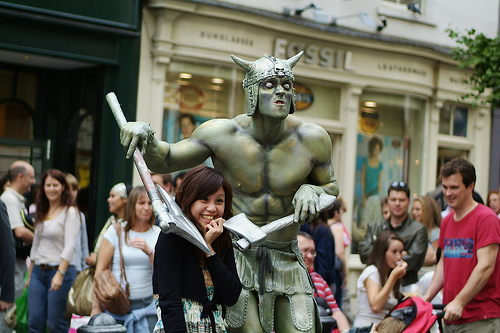Covent Garden
Perhaps one of the most popular tourist attractions in London, most visitors make sure that they pay at least one visit to this historic area of the city. Originally the largest fruit and vegetable market in the whole of England Covent Garden is now home to bars, restaurants, shops and a fabulous eclectic market.

History
The area was once owned by Westminster Abbey with the land being called ‘Convent Garden’ in the 1630’s. However, recent archaeological digs unearthed the remnants of Saxon inhabitants of the area, which it is believed date back to approximately AD410. This is around the time when the Roman invaders left their Londinium behind and abandoned their occupation of England. History shows that the Saxons created a trading port to the west of the great city which covered the Covent Garden area, though this port and settlement (Lundenwic) was also abandoned as the Viking invaders exerted pressure in the areas inhabitants in the 9th century. The area then reverted back to agricultural use until the 17th Century when the great town planning exercises of the time began.
Development
Based on ideas from Italian city architecture, the main square was surrounded by streets laid out in a grid, a far cry from the previous winding streets and alleyways that the city’s inhabitants had known. It proved to be a turning point in the future architecture of the city. The new ‘town square’ was designed as a public area, which proved very unpopular with the affluent residents of the area.
Many of the upper class residents moved out to more exclusive areas, leaving the area to the lower classes and their less than savoury past times. However the area stared to attract artists and musicians which gave the place a new ambience and feel. The fruit and vegetable market continued and expanded, especially after the great fire of 1666 when the other markets of the area were destroyed. The area did acquire a somewhat dubious reputation during this time, with the theatre and bars around the square earning reputations of their own.
The Arts
Covent Garden has also always been associated with the Theatre, the oldest in the area being The Theatre Royal on Drury Lane, its origins date back to the 1660’s. The developments of smaller auditoriums lead to the development of the Covent Garden theatre in 1732. New buildings were designed to blend with the existing iron and glass structures of the flower market buildings, most of which now form part of the Royal Opera House. Always a home for artists, the area attracted writers and publishers with many famous theatre publishing houses making the area their home.
Today Covent Garden attracts millions of visitors each year, and though the area has been extensively developed a lot of the original features can still be seen. It is a great place to explore, but be warned, with so much to see and do, and the fabulous market, you may go home with more than you bargained for.

